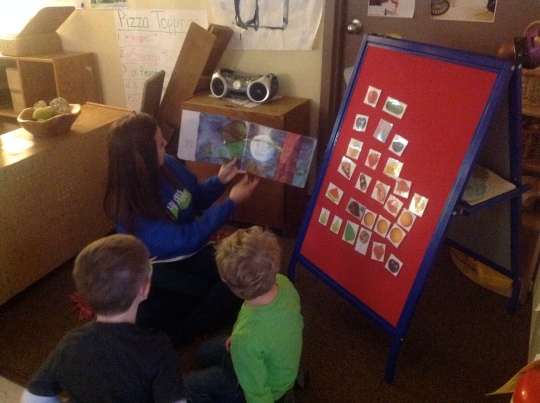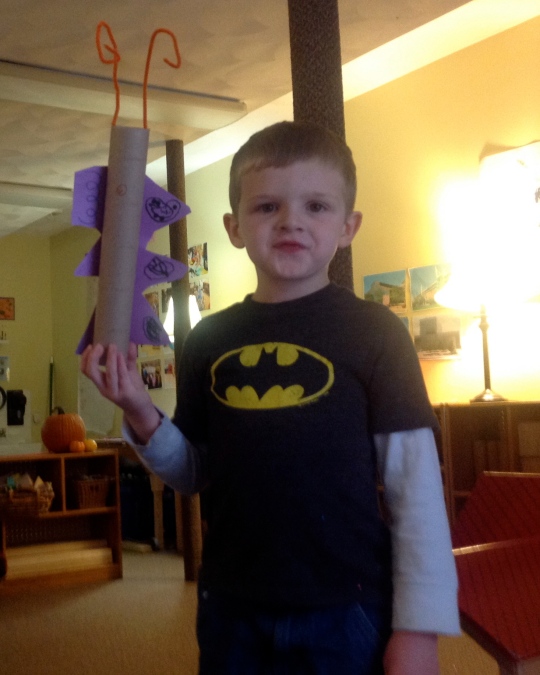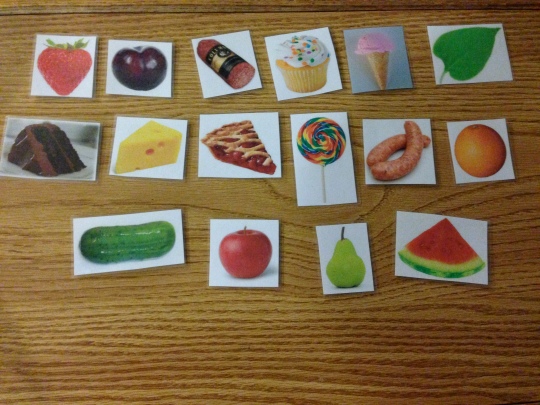Reading Aloud to Children Part 3 – Flannel Stories
My three part series will come to a conclusion with a post about flannel board stories. Flannel board stories are a great way to take your standard children’s book and make them a hands-on learning experience. This is a great way for children to tell and retell their favorite stories. Flannel stories are great for reading, listening, retelling, sequencing, language, turn taking, fine motor skills, math, and beyond.
Flannel stories can be done in several different ways. I made my own flannel story for The Very Hungry Caterpillar and used it last year with the Ladybugs (2 year old classroom) and this past week with the Leapfrogs (3-5 year old classroom). With both classes, I did the story in different ways. One way you can do it would be to hand out the pieces to the children to hold on to and they can put them on the board when they hear that event or character appear in the story. With my particular flannel story, I made a caterpillar that the children would feed the food as he ate it in the story. The first time through I gave the children pieces to hold and when I read a particular food, they would have to search their pile to see if they had that piece and then they were able to feed it to the caterpillar. 
Another time when I did it, I placed all the pieces on the flannel board to begin with and had the children take turns taking the pieces off the flannel board and into the caterpillar’s mouth.
For retelling, I had a child place all the pieces on the flannel board and he wanted to feed the caterpillar without looking at the book. He retold Monday through Friday by figuring out which pieces had multiples and making the connection that one piece would be the first day, two pieces would be the second day, etc. I was impressed with his technique.
I had an amazing experience when I did this flannel story with the preschoolers. After going through the story a few times, I had a child ask me, “Where’s your butterfly?” I told him I did not have one, but maybe we could make one. He agreed and we went to the table and I opened the book for him as a guide and he got out a paper towel roll, construction paper, markers, glue, and pipe cleaners. Once other children saw what he was doing I had others join to make butterflies and caterpillars. They were all so proud of their work.
If you are looking to make your own flannel story, they are actually quite simple. I have provided photos of the one I made, along with the pieces for The Very Hungry Caterpillar. I went to Hobby Lobby and bought a canvas and felt. I simply laid the felt over the canvas, wrapped it over onto the back and little bit and stapled it. For the pieces, I looked up real-life photographs of the food. I feel like the children are able to relate real-life photographs to their lives versus cartoon photographs. I then laminated them and put a piece of circle velcro on the back. You can also make the pieces out of felt. If you are not going to use real-life photographs, I suggest using pieces that match the images in the book; that way children can simply match. Another route to take would be to copy pages out of the book to use as your pieces (if doing so, the photos must be used for educational, personal, and nonprofit uses due to copyright laws).
(Note: For the pieces that are multiples, I made them all. Two pears, three plums, etc.)
For popular children’s book, the internet is a great resource to use for flannel story pieces. Many of them are free printables that you can either color yourself or print out in color and use. I have provided a few websites that contain pieces for popular stories that you might find of interest. It is pretty easy to find printables if you have a specific story in mind that you would like to use. Flannel board stories are such a simple lesson to do with children and they love being able to interact with their favorite books. This is something that contains no age limit; all children are able to participate and enjoy flannel stories in different ways.
http://www.dltk-kids.com/type/felt_board.htm
http://www.preschoolprintables.com/felt/felt.shtml
Stay tuned for more,
~ Chelsea








